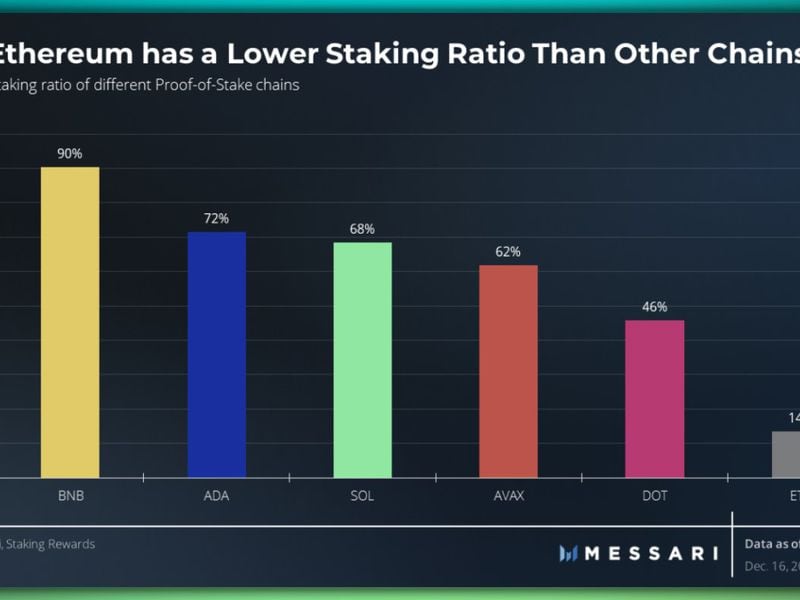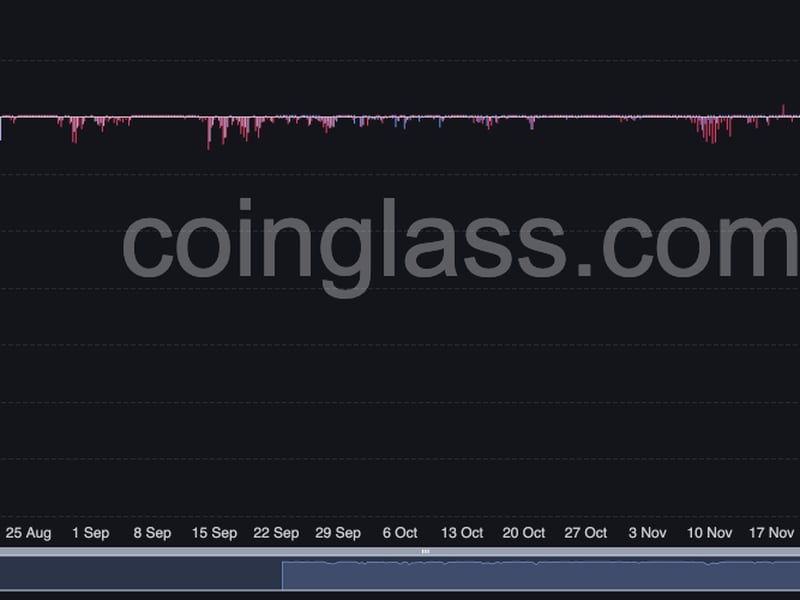Ethereum's Impending Shanghai Upgrade Powers Lido DAO, SWISE, RPL Tokens Higher

There is rarely a dull moment in the crypto market.
While bitcoin (BTC) and ether (ETH) remain in stasis, governance tokens of liquid staking platforms, which allow users to retain liquidity of their tokens even though they are locked in a blockchain network, are rallying.
Lido DAO or LDO, the governance token of Lido decentralized autonomous organization (DAO), has jumped 19% in the past seven days, with prices reaching a 1 1/2-month high of $1.30 early Tuesday, according to data source Coingecko. Liquid staking protocol StakeWise's SWISE token has surged over 70% in a week, while Rocket Pool's RPL has gained almost 10%.
The rally follows Ethereum developers' Dec. 8 announcement that the network's next hard fork, or backward-incompatible upgrade, will take place in March. The upgrade, known as Shanghai, will include code allowing withdrawals of ether staked in the Beacon Chain since December 2020, finally giving participants a timeline for reclaiming their ether.
"Most recently, liquid staking derivatives [tokens] have had a nice uptrend. This is thanks to the Shanghai upgrade expected in a few months, which will enable withdrawals of staked ETH," pseudonymous analyst CroissantEth tweeted. "As withdrawals are enabled, many believe more users will stake their ETH."
Staking refers to locking coins in a cryptocurrency wallet to support a blockchain's operations in return for rewards. The process is loosely analogous to investing in fixed-income securities, such as bonds.
However, staking can tie up assets for a long time. Liquid staking protocols remove the opportunity cost by issuing a derivative token that represents the claim on the locked coins and rewards earned. These derivative tokens can be used elsewhere to generate additional yield.
At press time, ether staked through liquid staking protocols accounted for over 40% of the total ether deposits of more than 15.7 million, per data sourced from Dune Analytics. That explains liquid staking governance tokens' positive price action ahead of the Shanghai upgrade.

According to Messari, ether has a staking ratio of 14%, the lowest among layer 1 coins. Therefore, there is plenty of room for growth in the ether stake rate – the amount of ether staked relative to the cryptocurrency's total supply – and adoption of liquid staking protocols.
Activity in liquid staking protocols has picked up in the past few weeks, as highlighted by Binance Labs' David Alexander.
Quick 🧵on the Shanghai upgrade and $ETH staking:
— David Alexander II (@Mega_Fund) December 27, 2022
As withdrawals on staked $ETH now have a tentative release date, this has led to increased staking activity - the highest monthly volume since April. However, this upgrade also has many implications for staking providers ⬇️ pic.twitter.com/A8UuSuikai
With a total value locked at $5.9 billion, Lido has left behind MakerDAO and AAVE to become the world's biggest decentralized finance (DeFi) protocol, according to data source Defi Llama.
Shorts stacked in LDO
Still, some traders appear skeptical of long-lasting gains in LDO. That's evident from the profoundly negative funding rates or costs incurred for holding bullish long or bearish short positions in the perpetual futures contracts tied to LDO.

A negative funding rate indicates the leverage is skewed on the bearish side. That leaves the doors open for a short squeeze – an exaggerated price rally triggered by bears squaring off their positions.
"Shorts have stacked on (in LDO) following the outperformance in hopes that early investors sell (as per on-chain evidence)," crypto hedge fund Ouroborus Capital told CoinDesk. "However, it is likely as well that shorts can be squeezed, ushering another leg up as these on-chain sellers were merely closing their perp shorts/spot longs."








